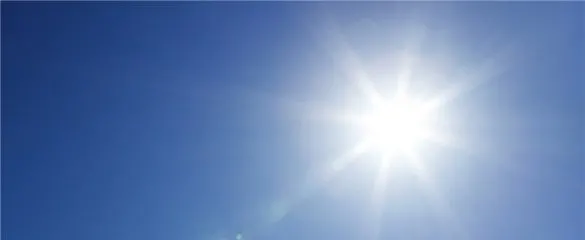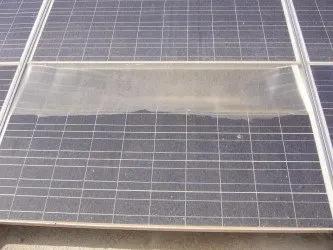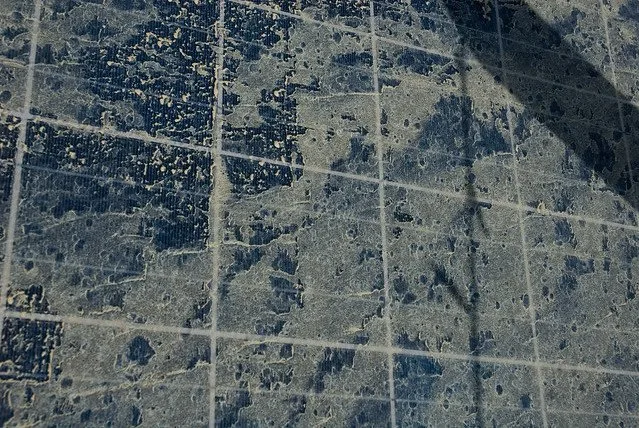I was sat in my garden looking up at my newly installed Solar Panels and was wondering just how long do these things last?
How much do solar panels degrade each year? A 2012 NREL Study suggests that on average solar panels degrade at a rate of 0.8% per year with an initial performance loss of between 1% and 3% over the first year due to Light Induced Degradation (LID).

Fortunately, these figures tend to err on the side of caution and most modern solar panels are expected to degrade at a much lower rate. I’ve done a bit of research to find out what causes degradation and if there is anything we can do to reduce its effects.
What is Degradation and should I be concerned?
Degradation is a term used to describe the steady decline in power output by a solar panel over a period of time. All solar panels degrade but it is important to note that not all panels degrade at the same rate.
The quality of the materials used, manufacturing techniques and the location of the installation can greatly influence the rate of degradation.
When choosing your solar panels it is important that you weigh up the financial benefits of either saving on the initial cost of the panels or the long terms savings of investing in higher quality panels.
The difference between a cheaper panel that degrades at a rate of 0.8% and a more expensive panel that degrades at a rate of 0.4% can mean a significant losses in terms of kilowatt-hours of energy over a 25 year period, and of course you’re going to have to replace the panels more often.
The 2012 NREL Study
A study conducted by the National Renewable Energy Laboratory (NREL) in 2012 which examined a number of Photovoltaic panels suggested that on average you should expect a average degradation rate of around 0.8% per year with an initial degradation of between 1% and 3% during the first year of use (see Light Induced Degradation below).
| Year | Efficiency | Year | Efficiency | Year | Efficiency |
| 0 | 100% | 9 | 91.6% | 18 | 84.4% |
| 1 | 98.0% | 10 | 90.8% | 19 | 83.6% |
| 2 | 97.2% | 11 | 90.0% | 20 | 82.8% |
| 3 | 96.4% | 12 | 89.2% | 21 | 82.0% |
| 4 | 95.6% | 13 | 88.4% | 22 | 81.2% |
| 5 | 94.8% | 14 | 87.6% | 23 | 80.4% |
| 6 | 94.0% | 15 | 86.8% | 24 | 79.6% |
| 7 | 93.2% | 16 | 86.0% | 25 | 78.8% |
| 8 | 92.4% | 17 | 85.2% |
As manufacturing techniques improve, more modern monocrystalline silicone panels are expected to degrade by less than 0.4% per year on average, meaning a 92% output performance after 20 years of use. Monocrystalline Silicone panels are the most commonly used panels for commercial and residential use.
What causes Solar Panel Degradation?
1. Sunlight
That’s right, Sunlight. The greatest amount of degradation occurs on day one, in fact within the first few hours. Light Induced Degradation (LID) is a phenomenon that causes a loss of performance within the first hours of being exposed to the sun and ultraviolet rays.

It is Light Induced Degradation that accounts for the 1% to 3% degradation usually seen within the first year of use.
The actual science behind LID is far too complex for me but if you are interested in that sort of thing you can read Understanding Light-Induced Degradation of c-Si Solar Cells published by NREL in 2012, but in summary
“This is caused by oxygen impurities in crystalline silicon bonding with boron dopant to produce a boron oxygen complex that reduces the minority carrier diffusion length.”
Did you get that?
2. Potential Induced Degradation (PID)
Potential Induced Degradation is an undesirable property of some solar panels.
There are three factors that enable PID and these are heat, humidity and voltage which exist on all photovoltaic (PV) systems, yet the effects of PID does not occur on all PV systems.
PID is a highly technical phenomenon and requires some understanding of chemistry and physics.
“Potential Induced Degradation, as the name implies, can occur when the module’s voltage potential and leakage current drive ion mobility within the module between the semiconductor material and other elements of the module (e.g. glass, mount and frame), thus causing the module’s power output capacity to degrade.”
Advanced Energy – White Paper
The effects of PID can be either reversible or irreversible and this depends on the cause of PID in the first place. PID caused by electrochemical reactions are irreversible as they lead to corrosion and delamination within the modules.
The rise in transformerless inverter usage in the U.S is also increasing the risk of PID. PID occurs when different components within the PV system are at different voltage potentials. Usually, negatively grounding the system removes this issue but transformerless inverters are ungrounded.
Over the years, many manufacturers have taken steps to produce PID resistant modules so PID should be far less of a problem on modern PV systems.
3. Hot Spots
Hots spots are small localised areas of high temperature which can lead to destructive effects such as the cracking of cells or glass and the melting of solder joints within the panel.
One common cause of hot spots is where one or more cells in the series are shaded causing a large reverse bias across the shaded cells which in turn causes a large dissipation of power in the shaded cell and a localised overheating or “hot spot”.
Other causes of hot spots are;
- Cell mismatch which occurs when cells of varying current production are used in the manufacturing process and usually only an issue with cheaper low quality panels.
- Cell damage which has occurred either during manufacture or installation of the PV system.
- Dust, dirt and other contaminants that soil the panels during their lifetime.
Hot spots can often be avoided by removing partial shading of the panels and a regular cleaning cycle.
4. Delamination
In order to protect solar panels from the ingress of moisture, humidity and oxygen, the panels are laminated. Slight imperfections or damage to the lamination can cause the lamination to fracture into layers thus breaking the bond between the plastics on the back and the glass on the front.

This effect is known as delamination and results in less protection of the panel from the elements. The air and moisture that is allowed to penetrate will cause corrosion, a reduction in the power output, and the eventual failure of the panel.
This article is owned by SolarPowerGenie.com and was first published on August 8, 2019
Delamination can be identified by what appears to be bubbles in the panel and is more often than not caused by poor manufacturing techniques.
5. Dust, Dirt and Bird Droppings
Solar panels work by absorbing light into the solar cells. The more light, the more power each cell can generate.
Over time dust, dirt and bird droppings will accumulate on the solar panel thus reducing the amount of light that can enter the photovoltaic cells. Just think of the amount of dirt that builds up on your cars windscreen within a week or two and it never seems to just wash off with the rain. Now imagine how much dirt can build up on your solar panels after a few months or years without cleaning.

Some say a regular cleaning of the panels can improve the efficiency of your solar panels by up to 10%, although you should weigh up the cost of having the panels cleaned vs the additional savings you’d make by having slightly more efficient panels. After all what’s the point of spending $200 to have the panels cleaned in order to save $80 in electricity.
Can I Reduce the Effects of Degradation?
In general, solar panels are extremely durable and have been manufactured to withstand most of what mother nature can throw at them.
This article is owned by SolarPowerGenie.com and was first published on August 8, 2019
The best way to ensure the longevity of your solar panels is to ensure you choose a high quality panel in the first place and also have the installation done by a professional, reputable installer.
Regular inspections and maintenance can reveal easily remedied issues such as dirt, loose and damaged panels, exposed wires and corrosion. Fixing these issues early on will lead to a slower rate of degradation.
If you solar panels are installed near trees then it is also advisable to do regular checks in all seasons for the partial shading of your panels and also ensure that branches are cut back to ensure they can not scratch or damage the panels in high winds.
In Summary
All solar panels will degrade over time. The goods news is that as processes and materials improve so do the rates of degradation. Solar Panel warranties are also improving and it shouldn’t be too long before we see average degradation rates drops to the likes of 0.4% or even better.
Related Questions
How long do solar panels last on average? Solar Panels are expected to last a minimum of 25 years. However this does not mean that after 25 years you panels will suddenly stop working. As solar panels degrade over time it just means that they will produce less and less power as the years go by. If the solar panel is still producing sufficient power then it’s up to you whether or not to replace it.
How long will it take for solar panels to pay for themselves? Approximately 7-20 years. Solar panels are a great way to save money on your electricity bill, but in order to get there you have to make a hefty investment first. A PV installation can cost in the region of $17,000 although there are often tax breaks and incentives available depending on the state.
Featured Image by Kiran Jonnalagadda
Related Articles
Can You Mount Solar Panels Upside Down?
Should solar panels be covered when not in use?
What to Do About A Solar Battery Draining Fast
Why Are Solar Panels So Expensive?
This article is owned by SolarPowerGenie.com and was first published on August 8, 2019
